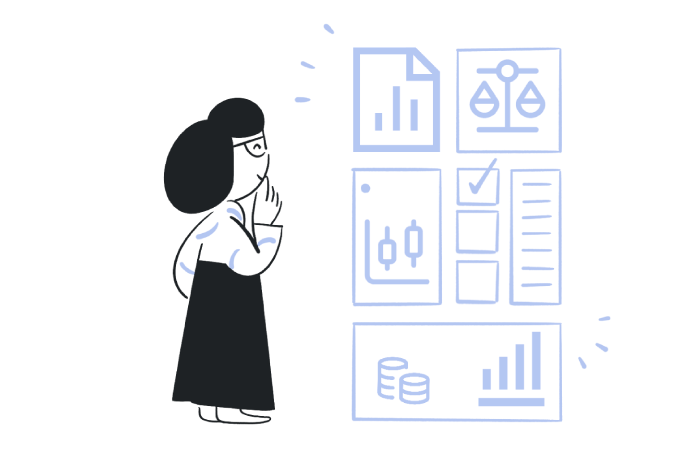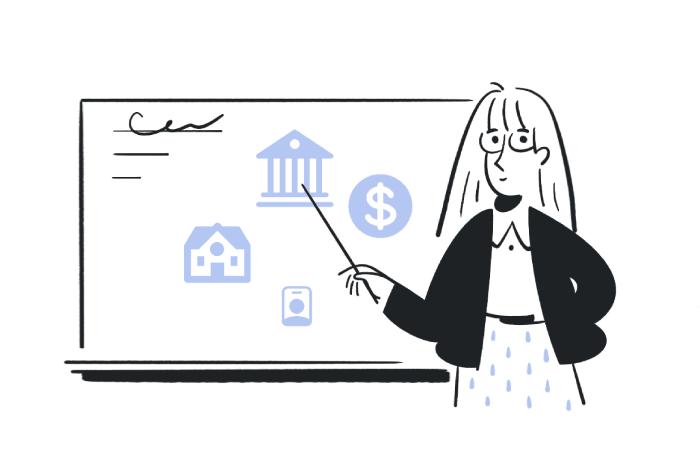What Is the Forex Market?
What Is the Forex Market?
"Interested in the world's largest financial market? Learn what the forex market is, how it works, and what the draw is for the millions of traders who enter the market 24-hours a day."
Wikilix Team
Educational Content Team
12 min
Reading time
Beginner
Difficulty

Forex, short for foreign exchange, is the global marketplace where currencies are bought and sold. Also known as the FX market, it's the largest and most liquid financial market in the world, with over $7 trillion traded daily. The Forex market is the global, decentralized marketplace where currencies are traded. Unlike stocks or commodities, Forex doesn't have a central exchange. Instead, it operates over-the-counter (OTC), meaning trades happen electronically through a network of banks, brokers, and financial institutions around the world.
Why It Matters:
• Enables international trade and investment.
• Allows hedging against currency risk.
• Offers profit opportunities for traders using strategies based on price movements.

Let me break it down simply. The Forex market, short for foreign exchange, is the global marketplace where one currency is exchanged for another. It's the most significant financial market in the world, by far. We're talking over 7 trillion dollars traded every single day. That's more than the stock market, bond market, and crypto market combined.
But unlike the stock market, which trades through central exchanges like the NYSE or NASDAQ, Forex is entirely decentralised. It runs electronically, over-the-counter (OTC), which means banks, brokers, and traders around the world are connected digitally 24 hours a day, five days a week.
The main idea is this: you're always trading currency pairs. When you trade, you're simultaneously buying one currency and selling another. For example, if you trade EUR/USD, you're purchasing the euro while selling the U.S. dollar.
Who Participates in Forex?
You might be surprised at how many different players are involved in the Forex market:
• Central banks: They influence currency prices by setting interest rates and engaging in monetary policy.
• Commercial banks and financial institutions: These are the heavyweights, moving billions every day for clients and their own accounts.
• Corporations: Companies that do international business need to convert currencies constantly to pay suppliers or receive payments.
• Hedge funds and institutional investors: They trade Forex to hedge risk or to seek profit.
• Retail traders (like you and me): With a laptop, a broker account, and some knowledge, individual traders can also access the market.
How Does the Forex Market Actually Work?
Let's dive into how it actually works.
1- Currency Pairs
All Forex trades involve two currencies. One is the base currency, the other is the quote currency. If the EUR/USD is trading at 1.1000, that means 1 euro is worth 1.10 U.S. dollars.
Some of the most popular pairs include:
• EUR/USD – Euro vs. U.S. dollar
• USD/JPY – U.S. dollar vs. Japanese yen
• GBP/USD – British pound vs. U.S. dollar
• USD/CHF – U.S. dollar vs. Swiss franc
These are called major pairs—they involve the most traded currencies and have the best liquidity.
2- Pips, Lots, and Leverage
• A pip (percentage in point) is the smallest price move a pair can make, usually 0.0001 for most pairs.
• Trades are placed in lots. A standard lot is 100,000 units of currency. There are also mini lots (10,000 units) and micro lots (1,000 units).
• Leverage allows you to control a large position with a smaller amount of capital. For example, with 1:100 leverage, you could control a $100,000 trade with just $1,000.
⚠️ Caution: Leverage can amplify both profits and losses. It's a double-edged sword—handle with care.
When Can You Trade Forex?
One of the reasons Forex is so popular is that it's open 24 hours a day, from Sunday evening to Friday evening (New York time). The market is broken into four main trading sessions:
· Sydney (opens the market)
· Tokyo
· London
· New York
The busiest times are when the London and New York sessions overlap, because that's when the most liquidity and movement occur.
What Moves Currency Prices?
Currencies move for a lot of reasons, but here are the most common ones:
1. Interest Rates
When a country raises its interest rates, it tends to attract foreign capital, making its currency stronger.
2. Economic News
Reports like GDP, unemployment, inflation, and retail sales affect a country's economic outlook—and its currency.
3. Political Events
Elections, wars, trade agreements, or even a surprise tweet from a political leader can move the markets fast.
4. Market Sentiment
Sometimes it's not about data—it's about how traders feel. If fear takes over, money often flows into "safe haven" currencies like the U.S. dollar or Swiss franc.

How Do Traders Make Money in Forex?
Traders aim to buy currencies when they're undervalued and sell them when they rise in value—or do the opposite by short-selling. Here's a simple example:
Let's say you believe the euro will rise against the U.S. dollar. You buy EUR/USD at 1.1000. Later, it rises to 1.1100. That's a gain of 100 pips. If you were trading one standard lot (100,000 units), that move would be worth $1,000.
But if the market moved against you, you could lose just as much. That's why risk management is so important.
Tools of the Trade
To be successful in Forex, most traders rely on two main types of analysis:
1. Technical Analysis
Using charts, indicators (like RSI, MACD, moving averages), patterns, and price action to predict future movement.
2. Fundamental Analysis
Studying the economy—interest rates, inflation, employment, and geopolitical events.
Most traders use a combination of both.
What Do You Need to Start Trading Forex?
Getting started is simpler than you might think. Here's what you need:
1. A reputable broker – Look for one that is regulated in your country, offers a user-friendly platform, and has low spreads.
2. A trading platform – Most brokers use MetaTrader 4 (MT4) or MetaTrader 5 (MT5).
3. A demo account – Before risking real money, practice trading in a simulated environment.
4. A trading plan – Define your goals, risk tolerance, strategies, and rules. Stick to it.
5. Risk management tools – Always use stop-loss and take-profit levels. Never risk more than 1–2% of your capital on a single trade.
Advantages of Trading Forex
- High liquidity – You can enter and exit trades quickly, even with large amounts.
- Low entry barriers – Many brokers allow you to start with as little as $100.
- 24-hour access – Trade whenever it suits your schedule.
- Global exposure – Stay informed about global economics and political events.
Risks You Should Know
Like any form of investing, Forex comes with risk. The most common ones include:
· Over-leveraging – Trading too large a position can quickly blow your account.
· Emotional trading – Fear and greed are your worst enemies.
· Lack of education – Trading blindly is like gambling. Learning comes first.
Final Thoughts: Is Forex Right for You?
Forex isn't a get-rich-quick scheme. It takes time, patience, and discipline. But if you're willing to learn, manage risk properly, and stay consistent, it can be a powerful way to grow your financial knowledge—and potentially your wealth.
Start slow. Use a demo account. Read. Learn from mistakes. Track your trades. And never stop improving.
As someone who's been through the ups and downs of this market, I can tell you this: Forex can be incredibly rewarding—not just financially, but intellectually. You'll learn to think globally, analyse trends, and develop mental discipline. That, in itself, is worth the journey.
insert your content
What's Next?
Keep building your knowledge with our structured learning path. Each section builds upon the previous one.
This is the first section
You're at the beginning of your journey!
This is the last section
You've completed this course!
